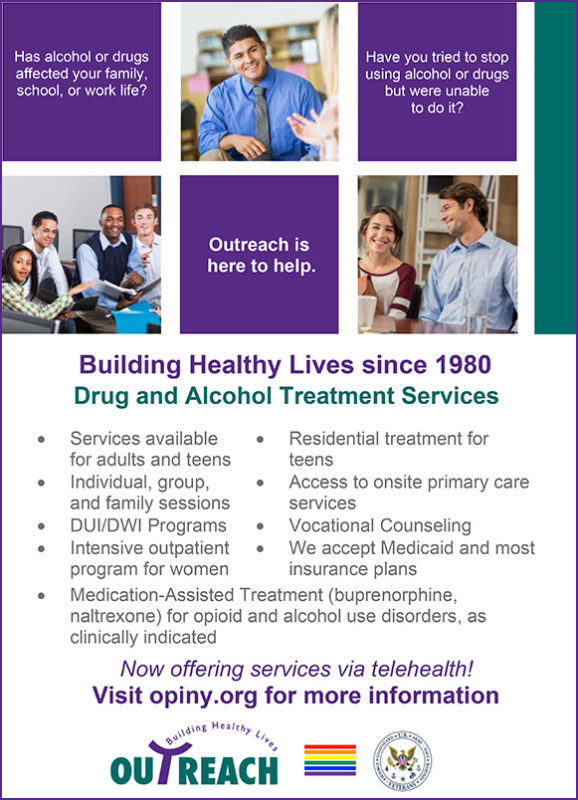Teenagers who make the bold decision to enter a residential treatment program for their mental health and substance use disorders are a unique subset of the adolescent population. They are a group of young people who have committed to temporarily separating from their families, schools, communities and friends with a goal of improving their mental health while commencing their journey of recovery from their substance use disorder.

John M. Venza, LCSW-R, LMHC
This separation can be both transformative as it can be disruptive, and with the impact of the novel coronavirus and COVID-19 pandemic, providers have had to rapidly adapt to maintain a safe and stable treatment experience for teens in residential treatment. This article provides insights and opportunities specific to how teenagers in treatment have experienced COVID-19 and the impact on the treatment episode.
During the spread of COVID-19, as a society we have become accustomed to words and phrases like “the new normal,” “crisis” and “pandemic” – concepts we are all challenged to fully comprehend. In so many ways, the struggle for individuals to adapt in social-interpersonal relationships, employment and family functioning has people moving outside their comfort zone as they adjust to new idiosyncratic roles (Marini, I & Stebnicki, M., 2018) in the best of circumstances.
As challenging as changes due to COVID-19 is for adults, in the already complicated world of the teenager, the impact of these changes can be profound. But exactly what effect? From my discussions with teens, the general consensus is that young people have struggled, even resisted, the concept of sheltering in place and not being able to be with their friends. Developmentally, this makes perfect sense considering the importance of peers during this life stage (Erikson, Erik, 1968). The absence of socialization at school each day, cancelled sweet sixteen parties, and long-awaited proms and commencement ceremonies not to be, instills a common denominator of loss that is shared by teenagers across the nation as they recalibrate their lives during COVID-19.
Interestingly enough, the niche population of teenagers living in a residential treatment program have demonstrated their resiliency towards the adversity (Benard, B, 1991) stemming from COVID-19. Several factors that have contributed to their positive adjustment.
Structure and the therapeutic milieu. While teenagers in larger society are feeling a profound loss of their friends, the teens who have entered residential programs around the country have previously reconciled this difficult change long before COVID-19 reared its ugly head. The key difference is that teenagers entering treatment have acquired the support of the therapeutic milieu, clinical staff, and a new peer group sharing the journey of recovery. Residential treatment programs have a long-standing history of embracing the treatment community as a key component of change, historically referred in our field as “community as method.” (DeLeon, G., 2000).
Another factor that has safeguarded teens in treatment is the structure that residential treatment programs provide. The uncertainty of the pandemic has prompted many of the guidance documents around COVID-19 to suggest the importance of structure and maintaining a routine. The design of residential treatment programs has long demonstrated the clinical value of daily activity schedules in the treatment approach. Consistency and set tasks are cornerstones to one’s recovery and these elements have provided tremendous support for teens in treatment around the country. This structure contrasts a growing population of teens at home who may be developmentally and emotionally struggling with a newfound disruption in routine and lack of community and socialization opportunities due to the shelter-in-place restrictions placed on them. The dissonance between these two realities only affirms the benefits derived from structure and routine for young people during COVID-19.
Family involvement. Residential treatment programs have long recognized role of families as vital to the treatment process. COVID-19 and ensuing public health orders have resulted in the cessation of on-site family therapy, home passes and other family events and activities. This has prompted the need to shift to telehealth to continue family therapy during the shelter in place order. By contrast, teens outside of treatment programs are forced to stay home with their families way more than they are accustomed to. Where parents may be enjoying the increased time with their teenagers, the young person that would normally be negotiating the task of separating and individuating (Blos, P., 1967) have experienced this as stressful.
Early in the process of implementing shelter-in-place guidelines, treatment professionals were prepared that teens and/or their parents might choose to leave the program against clinical advice amid COVID-19. Residential programs serving young people have experienced quite the opposite, seeing very good retention. Parents have expressed comfort in knowing that their children are in a physically and psychologically safe space. At the same time, the teenagers are kept informed and current about COVID-19 by clinical and healthcare staff. To this point, they have become accountable and responsible to the charge of keeping their parents and grandparents safe by remaining safely in treatment. Clinicians report telehealth family sessions to be affirming of the commitment to safety that parents and children have signed onto in the face of COVID-19.
Messages of continuity – life will go on. An important message that residential staff continue to communicate to the teenagers is that, despite the unprecedented upheaval in life activities and norms, this situation is temporary. Life will go on, and attention to treatment and education goals must remain strong. Seemingly, this lead and pace message has manifested in these young people taking full advantage of their virtual classrooms and increased introspection in their individual sessions with clinicians. It is so important remind them of all the good times ahead in their young lives.
The opportunity in the crisis? From our perspective, residential treatment for teenagers has provided a safe and nurturing setting that has allowed them to face COVID-19 in a resourceful way beyond their years. Perhaps the takeaway here is a reminder that when a young person enters residential treatment, they are taking time away to invest in themselves. Long after COVID-19 passes, let’s remember how effective this treatment approach was in helping young people navigate the crisis.
John M. Venza, LCSW-R, LMHC, is Vice President of Residential and Adolescent Services at Outreach Development Corporation.







